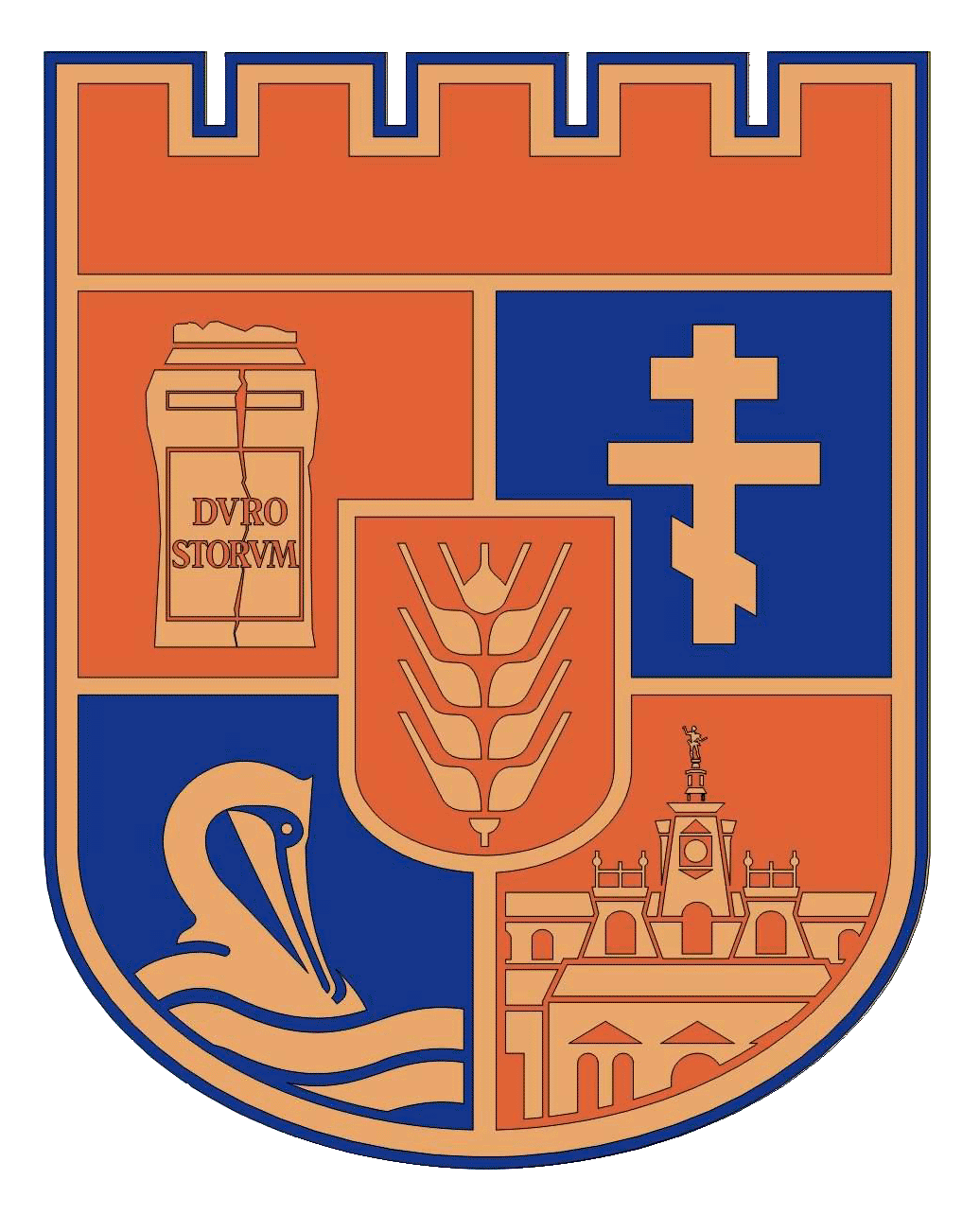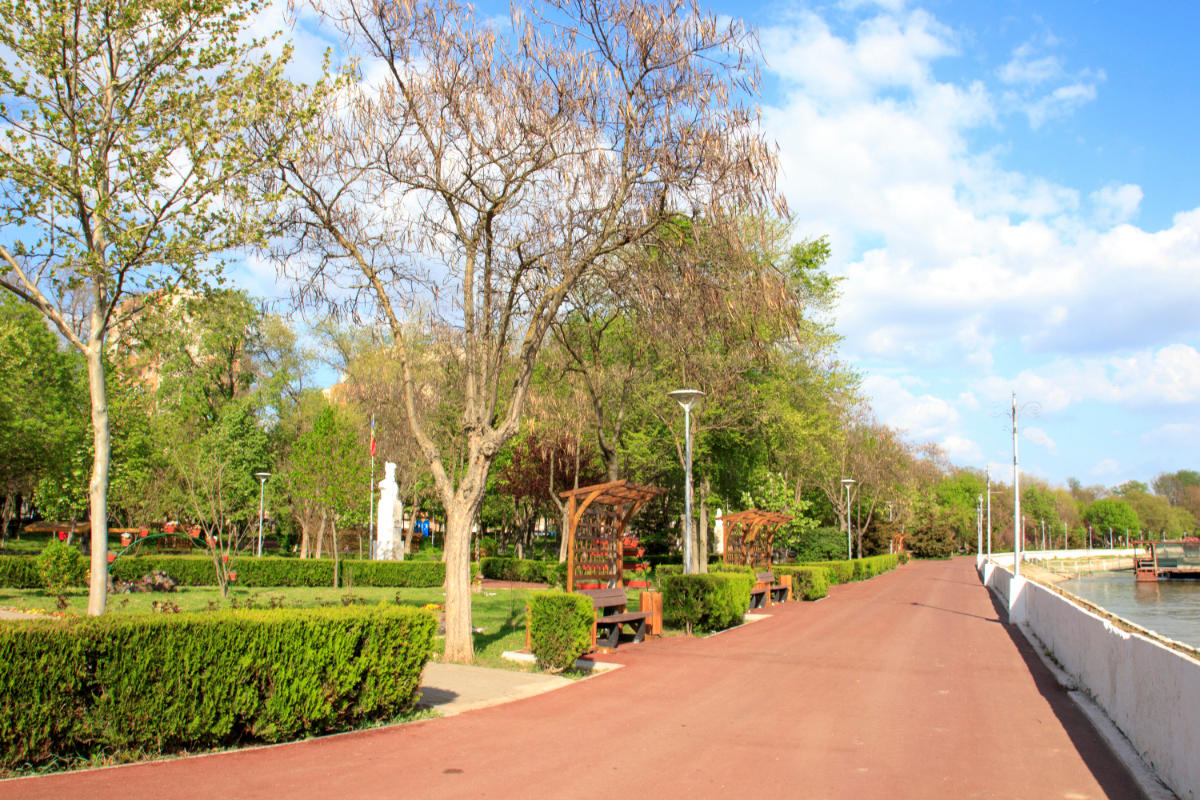Municipal Park, Călăraşi
Category ParkLOCATION
Călăraşi
DESCRIPTION
The municipal park located near the Danube, presents a rich collection of sculptures of rulers whose fate was related to the ancient or modern history of Romania. Apart from the fact that the park is located on the Danube's cliff, it is the host of the Burebista statue, the first Dacian king who reigned over the territory of the Romanian country. The park also has a statue of King Carol I. It is an ideal place for an evening promenade.[1]
HISTORY
Calarasi, formerly known as Lichiresti and temporarily Ştirbeiu, is the largest city in the county and one of the most important municipalities in the South development region.
The name of Lichireşti probably dates from the beginning of the first settlement of settled inhabitants in these lands, during the reign of Michael the Brave. The Lichiresti is mentioned for the first time on a map, in 1700, a cartographic work of the practitioner Constantin Cantacuzino, printed in Italy, in Padua.
The name of Calarasi has two possible causes: the first is that the crossing point of the Ottoman Empire in Wallachia was guarded by horse cavalry (călăreți), while another would be the extension of the name of the Calarasi Old Town, because the best riders for the army were recruited from that village and the city
The population at that time was represented by people who were engaged in agriculture and animal husbandry. They were mostly Romanians with a small number of Bulgarians and Turks. A special category were the horse riders who carried out courier services on the Bucharest - Constantinople route. They were most likely organized during the time of Prince Constantin Brâncoveanu, the first preserved document that notes of him dates back to May 25, 1722. Thanks to these cavalry men, who after the end of their service settled in the settlement near their retirement, the village Lichireşti began to be known as the "Calarasi village" or Calarasi. On May 1, 1734, Calarasi is mentioned as a fair, which is a sign that the village has taken on to build a commercial life. Different travelers who have traveled there have always had pleasant impressions of this fair. During this period Calarasi was part of Ialomita County, residing in Urziceni.
Towards the end of the eighteenth century public life improvements began to take place: besides the old church in the center of the village, there was a central inn and many shops, which - along with the homes of more wealthy inhabitants - would give Calarasi the feel of a town.
The current area of Calarasi was often the field of wars waged against the Turkish dangers for the defense of the Danube meadow. There have been many battles there since town establishment until 28 May 1812 when peace was signed in Bucharest. The locals lived through more horrors in 1821 ended with the triumph of the revolution led by Tudor Vladimirescu. Another moment of panic for the inhabitants was the new Russian-Turkish war in the years 1828-1829. As if the losses caused by the war were not enough, a terrible epidemic of plague broke out in Calarasi in 1828-1830. In the summer of 1831, the cholera broke out by the Turks, fortunately this new epidemic lasted for only a few days
Although after 1833 wealthy people came to Calarasi, a lot of them being merchants, only a small part of them settled definitively, most of them doing business and leaving the city, not daring to stay in a turbulent town without any hope for the future.[2]
The history of Romania is illustrated in the Central Park, in chronological order from the Borcea downstream, by the monuments of the local leaders, from Burebista, the Dacian king, to King Ferinand The Unifier, all standing here on the border of the Danube.
A high cross, painted in gold, reminds the passers-by to the tragic end of many Romanian soldiers perished at the sinking of the Teleorman boat dated October 31, 1912. At the crosess’ base, the names of each of the victims are written on stone plates.
SITE SIGNIFICANCE
The municipal park located near the Danube presents a rich collection of sculptures of rulers whose fate was related to the ancient or modern history of Romania
VISITOR INFORMATION
It is located outside and is free to visit.
OTHER INFORMATION
The statue of King Carol I is positioned in the park.
CLASSIFICATION
Natural architectural reserve
[1] 10 cele mai frumoase locuri din județul Călărași, 2015
[2] Parcul Florilor




